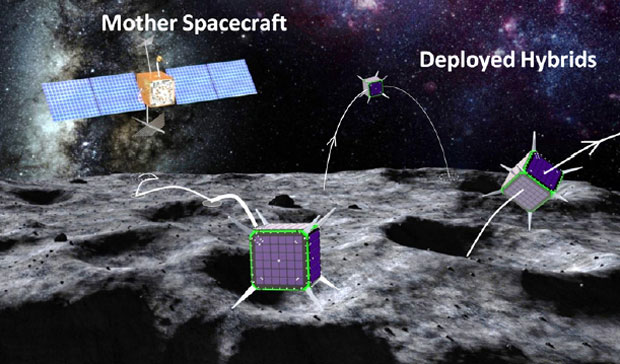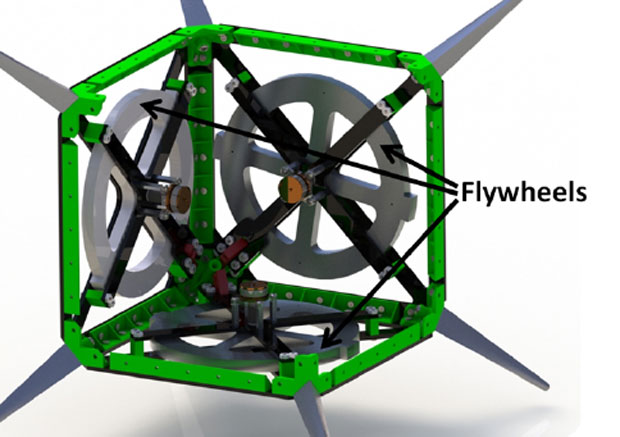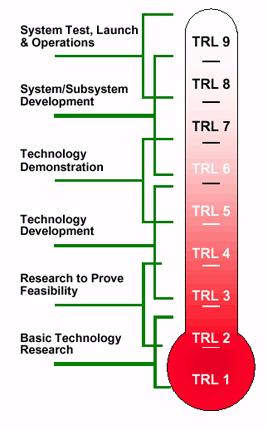NASA develops inertial robots for the study of asteroids

The agency NASA recently announced the launch of a project to create robots for the study of asteroids. At the same time, robots will work on the surface of the asteroid, which entails some difficulties for work.
The fact is that the gravitational force of the asteroid does not allow you to hold any actively moving tracked, reactive or walking apparatus. A small mistake, a slightly more active push - and that’s it, the robot flies into space, and hopes for receiving information about the asteroid are sent to the same place, into the void.
NASA decided not to use wheeled, tracked, walking and all other types of vehicles to work on an asteroid, but inertial systems. From the side it will look like a rolling cube. It all works like this:
Or like this:
Of course, such inertial systems should be refined in accordance with the conditions of microgravity. By the way, approximately such a system is used by space telescopes and some other devices operating in space. To change the position in space in such devices flywheels are used. The planned method of moving probes on the surface of the asteroid is not the most accurate way of moving, but quite effective under such conditions.

In addition, there will be no moving parts from the outside of the cube, and very little energy will be consumed. To provide energy to the inertial cube, solar panels placed on the housing will be used. In addition, scientific instruments can be built into such a probe, which will study the object according to various parameters.
It is planned that such probes, devices, will be simple and not very expensive. A uterus ship will deliver them to the asteroid, throwing a group of cubes upon reaching the target. Commands for cubes will be transmitted through such a ship.
Current funding, according to the plan, is not intended to bring the project to the final stage - the creation of the final version of the cube. This is still a long way off. According to NASA, the goal of the project is to bring the parameter TRL ( Technology Readiness Levels ) to 3.5. Now TRL = 2, which means "formulated technological idea of the project." Level 3 is already a theoretical and practical proof of the working capacity of an idea. Level 4 - the creation of the elements of the prototype and the prototype itself, capable of functioning with a simulated environment.

In general, the final stage of the current project is proof of the operability of the idea of a “jumping cube”, with, possibly, the manufacture of some parts of the layout or at least a computer model of the cube.
By the way, a TRL level of 8 means manufacturing a fully functioning system that has already passed all the tests under conditions that are as similar as possible to the real ones. The flight to the asteroid is still far away, there is a lot of time, so the hopping cube project has every chance of being realized.
Via ieee
